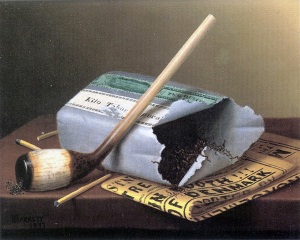Your story, “One Truth” is a master class in structure. It pulls us in with language, gives us suspense, and delivers the end with impact. We know what’s at stake: not just what’s going to happen to the main character, the girl with the righteous right hook, but nothing less than the mutability of truth. All of this is set up in the first paragraph. Tell us about your process during the writing of this piece. What was your initial inspiration?
I started with the image of a parent and child burning trash in a barrel. I saw the flames, felt the cold, and I knew a story was there waiting to be told.
How did the story develop for you as the writer? How did you arrive at the structure?
I’d been in a period of writing flash pieces, so I was already in the mindset of making the story short. Once I had that trash-barrel image, I started looking backwards to find the events that had brought them to that moment.
I love the way you reinforce the life lesson of this story throughout. What is it you think about when you rewrite? What questions do you ask yourself? When did you realize that your theme would involve “Truth” with a capital T?
Rewriting, especially on such a short piece, is all about forward motion. With each revisit, I try to make everything as clean as possible. Rewriting—and writing in general, for me—is about asking myself endless questions concerning form and presentation.
The truth part came later, after I realized the girl would be watching herself on videotape. The image on the screen is one type of truth, an easy truth, but the real truth the girl felt during the incident and later is different.
Do you have a favorite story you’ve written? Why? What else of yours is out there that we can read?
I don’t think I have a favorite—although I always say the story I’m currently working on is my favorite. That said, this last round of flash fiction I’ve published has given me some pieces I’ve been happy with—I had a piece in the last issue of Los Angeles Review that I’m happy with. And here’s a story that appeared in Hobart Web last year that I still like.
What’s next for you? More short stories? A collection? A novel?
I always like to have a few projects going. I finished a novel last summer and have started sending it around. This past year I returned to essays and have enjoyed that. And I’m always writing stories. I enjoy having a few different projects going at the same time—it lets me work on what interests me the most. And it allows me to let some things rest until I can return to them with a new perspective.
Tell us who you read and why.
The book I’ve enjoyed the most in the past year was James Salter’s Light Years. It might have been the only book I finished then went back and read again. Almost every sentence is perfect, every conversation a surprise. It’s really a stunning work of art.



 The core workshop of SmokeLong Fitness is all in writing, so you can take part from anywhere at anytime. We are excited about creating a supportive, consistent and structured environment for flash writers to work on their craft in a community. We are thrilled and proud to say that our workshop participants have won, placed, or been listed in every major flash competition. Community works.
The core workshop of SmokeLong Fitness is all in writing, so you can take part from anywhere at anytime. We are excited about creating a supportive, consistent and structured environment for flash writers to work on their craft in a community. We are thrilled and proud to say that our workshop participants have won, placed, or been listed in every major flash competition. Community works.